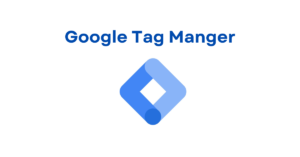In the world of digital marketing, leads are the foundation for business growth. They represent potential customers who have shown interest in your product or service and are prime candidates for nurturing into paying customers. Capturing, nurturing, and converting leads is essential to a successful digital marketing strategy, and mastering this process can significantly increase your revenue. This blog will dive deep into what leads are, why they are important, and how you can effectively generate and nurture them using digital marketing strategies.
What Are Leads in Digital Marketing?
A lead is any individual or organization that expresses interest in your product or service by providing their contact information, typically in exchange for something of value (e.g., a newsletter, a free trial, or an ebook). Leads can be classified into two primary categories:
1. Marketing Qualified Leads (MQLs): These are individuals who have engaged with your marketing efforts (such as downloading a whitepaper or subscribing to your blog) but aren’t yet ready to make a purchase. MQLs require further nurturing to move them down the funnel.
2. Sales Qualified Leads (SQLs): SQLs are prospects who are further along in the buying process and have shown clear intent to purchase. These leads are ready for direct sales outreach.
Understanding the difference between these two types of leads is crucial for properly segmenting your marketing efforts and converting leads into paying customers.
Why Are Leads Important?
Leads are critical for business growth, especially in digital marketing, where the customer journey begins with awareness and extends through conversion. Here’s why they matter:
1. Growth Driver: Leads fuel your sales pipeline, ensuring a steady flow of potential customers who can be converted into paying clients.
2. Targeted Marketing: Leads allow you to focus your marketing efforts on individuals who are already interested in your brand, increasing your chances of making a sale.
3. Higher ROI: By targeting the right leads, you can optimize your marketing spend, making every dollar work harder and leading to a higher return on investment (ROI).
4. Building Relationships: Lead generation is the first step in building a long-term relationship with potential customers, turning them into loyal advocates for your brand.
Lead Generation Strategies in Digital Marketing;
Lead generation is the process of attracting and converting strangers into prospects who are interested in your product or service. Here are some of the most effective strategies to generate leads in digital marketing:
1. Content Marketing;
Content marketing is a powerful tool for attracting potential leads by providing valuable information. When you create high-quality content that solves problems or educates your audience, you build trust, which encourages visitors to share their contact information in exchange for more value.
– Examples: Blog posts, eBooks, webinars, infographics, and how-to guides.
– Tactic: Offer a lead magnet (free resource) in exchange for an email address.
2. Email Marketing
Email marketing remains one of the most effective lead generation tools in digital marketing. With personalized and targeted email campaigns, you can nurture leads by sending them tailored content, offers, or updates that guide them through the buyer’s journey.
– Examples: Newsletters, drip campaigns, product updates.
– Tactic: Use segmentation to send personalized messages based on user behavior and interests.
3. Social Media Marketing
Social media platforms like Facebook, LinkedIn, and Instagram are ideal for generating leads. By creating engaging content and using social media ads, you can attract potential customers to your brand and encourage them to share their contact details.
– Examples: Social media contests, ads with lead generation forms, and influencer partnerships.
– Tactic: Use Facebook Lead Ads to capture leads directly on the platform without needing users to visit your website.
4. Search Engine Optimization (SEO)
SEO is essential for lead generation because it helps potential leads find your website organically through search engines. When your website ranks well for relevant keywords, you attract high-quality leads who are actively searching for solutions to their problems.
– Examples: Blog posts optimized for SEO, landing pages, and long-tail keyword strategies.
– Tactic:Focus on creating content that answers the search intent of your target audience.
5. Pay-Per-Click (PPC) Advertising
PPC campaigns on platforms like Google Ads and Bing Ads allow you to target leads based on their search queries. These ads appear when users search for specific keywords, making them an effective way to generate qualified leads.
– Examples: Google Ads, Bing Ads, and display advertising.
– Tactic: Use landing pages designed for lead conversion with strong CTAs (Calls to Action)
6. Landing Pages
Landing pages are standalone web pages designed to capture leads. A well-optimized landing page focuses on a single offer and encourages visitors to provide their contact details in exchange for something valuable, like an eBook, consultation, or free trial.
– Examples: Webinar registration pages, demo request pages, eBook download pages.
– Tactic: Ensure your landing page has a clear and compelling CTA and is free from distractions.
7. Webinars and Online Events
Hosting webinars or online workshops is an excellent way to engage potential leads and demonstrate your expertise. Attendees of these events are often high-quality leads, as they’ve shown interest in your industry or product.
– Examples: Live Q&A sessions, product demonstrations, industry panel discussions.
– Tactic:Promote your event through email marketing, social media, and PPC ads.
Lead Nurturing: Turning Leads into Customers;
Once you’ve generated leads, the next step is nurturing them through the funnel until they’re ready to convert. This is where a lead nurturing strategy comes into play. Lead nurturing focuses on building relationships and providing value to leads at every stage of the buyer’s journey.
Lead Nurturing Tactics:
1. Email Drip Campaigns: Create automated email sequences that educate leads about your product or service, share success stories, and offer special promotions.
2. Retargeting Ads: Use retargeting campaigns to stay top-of-mind for leads who have shown interest in your product but haven’t yet converted.
3. Personalized Content: Send targeted content that addresses the specific needs and pain points of each lead based on their interactions with your website or emails.
4. Follow-Up Calls or Messages: For high-quality leads, personal outreach through phone calls or direct messages can accelerate the conversion process.
5. Social Proof and Testimonials: Share customer reviews, case studies, and testimonials to build trust and move leads closer to making a purchasing decision.
Measuring Lead Generation Success;
To ensure your lead generation strategies are effective, you need to measure key metrics that indicate performance. Some important metrics include:
– Conversion Rate: The percentage of website visitors who become leads.
– Cost Per Lead (CPL): The amount you spend on acquiring each lead.
– Lead Quality:Measured by how likely leads are to convert into paying customers.
– Lead Nurturing Performance: Metrics like email open rates, click-through rates, and engagement levels can indicate how well your lead nurturing efforts are working.
Conclusion;
Leads are the driving force behind successful digital marketing campaigns. By focusing on generating high-quality leads through proven strategies such as content marketing, SEO, and social media, and nurturing them effectively through personalized communication and targeted follow-ups, you can maximize your chances of converting those leads into loyal customers.
Lead generation isn’t a one-time task—it’s an ongoing process that requires constant optimization and refinement. With the right strategies and tools in place, you can create a sustainable pipeline of leads that fuel long-term business growth.




